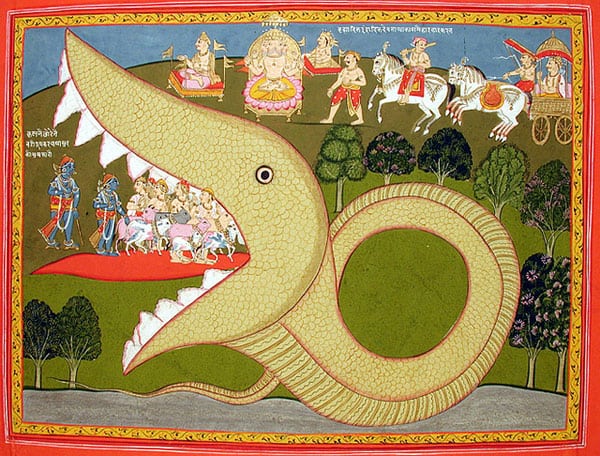
October 4, 2018; Voice of San Diego
The Commission for Arts and Culture in San Diego has been using the same funding algorithm since 1994 to calculate the value of grants awarded to arts organizations. So it seems perfectly reasonable for commissioners and grantees alike to suggest it may be time to revisit that formula and make some changes—like caps on how large any grant might be and attention to impact. However, as reported by Voice of San Diego (VOSD), a digital nonprofit news organization focused on local investigative reporting, the Commission itself may be more broken than its funding algorithm.
The Commission is funded by a hotel occupancy tax—which in a popular tourist and convention city like San Diego means a steady, generous source of municipal revenue for cultural organizations, one that many larger cities can only fantasize about. With an impressive $14.5 million in public funds awarded to arts and culture nonprofits and projects in fiscal year 2019, the Commission owes it to taxpayers to ensure grants are being awarded in a transparent way and with clear intentions. According to the website for the Commission:
The City of San Diego Commission for Arts and Culture serves in an advisory capacity to the Mayor and City Council on promoting, encouraging and increasing support for the region’s artistic and cultural assets, integrating arts and culture into community life and showcasing San Diego as an international tourist destination.
Two funding tracks are clearly described:
- Creative Communities San Diego for “community-based festivals, parades and celebrations with an emphasis on projects that promote neighborhood pride and community reinvestment, and on sponsoring projects that make arts and culture activities more accessible in all San Diego neighborhoods and encourage people of diverse backgrounds to share their heritage and culture.”
- Organization Support Program for “general operating support with an emphasis on the delivery of programs and services that impact San Diego’s quality of life and tourism.”
But here’s where things get muddy: At the moment, six of eight staff positions at the Commission are vacant, and one of the two current staff members is an acting executive director, while the search for a permanent leader continues. Nevertheless, this month the volunteer arts commissioners are set to kick off a series of meetings to review the current funding model. The website says the group consists of 15 commissioners, but only 13 are listed, and of those 13, only four appear to have deep experience in the arts sector. While it is not unusual to have an advisory body representing the community and providing stewardship when public funds are being spent, the composition of this group—combined with what appears to be a significant staffing issue—suggests the funding model itself should not top the list of concerns.
Sign up for our free newsletters
Subscribe to NPQ's newsletters to have our top stories delivered directly to your inbox.
By signing up, you agree to our privacy policy and terms of use, and to receive messages from NPQ and our partners.
With a short bench in terms of in-depth knowledge of the city’s arts sector and best practices in municipal arts funding, San Diego leaders perhaps ought to be asking what’s wrong with the way the Commission is structured and staffed, and what might be done to address that first.
One of the commissioners, Vernon Franck, described by VOSD as “a land surveyor and longtime arts advocate,” thinks the city needs a “cultural master plan,” but does not seem to understand what that means. He is quoted as saying:
The funding system is highly flawed…arts and culture in the city is defined passively by the Commission for Arts and Culture. To date, the city does not dictate or even encourage any particular kind of art or culture. We don’t have any sort of a survey or any regular analysis that says we’re funding this much music, or this much dance and visual art. So it ends up being a funding system for whoever ends up applying.
This comment led VOSD to analyze how much was awarded in the most recent fiscal year by arts disciplines. However, awarding funds by allocating certain “buckets” of dollars by arts discipline would not in any way be considered as a cultural master plan by those who have tackled this work in other cities. That would require a much more in-depth (and expensive) analysis of what the city hopes to accomplish by funding arts and culture, with long-term goals that most likely—in a city like San Diego—would continue to emphasize impact on the quality of life for residents across the city’s neighborhoods and identified arts districts; and impact of arts and culture in a sustaining a thriving tourism industry.
One member of the San Diego arts community, Peter Kalivas, executive and artistic director of PGK Dance Project, is cited by VOSD as a vocal critic of the Commission who believes the current funding system does need to be revisited, in part because he feels the old algorithm means the same nonprofits get more or less the same amount of city funding every year. He would like to see funding caps—especially for the largest organizations—to ensure more of the smaller arts groups receive adequate funding. He notes that San Diego Comic-Con International received one of the largest award amounts from the Commission for its new museum in Balboa Park—a whopping $489,802. This feels like a fair point—although without a thoughtful analysis of the impact on tourism and the other revenues generated for the city by this museum, it’s hard to be certain.
Which is why San Diego needs—and deserves—attention to its overall framework for allocating public funds for arts and culture, not merely an adjustment to its funding formula.—Eileen Cunniffe













